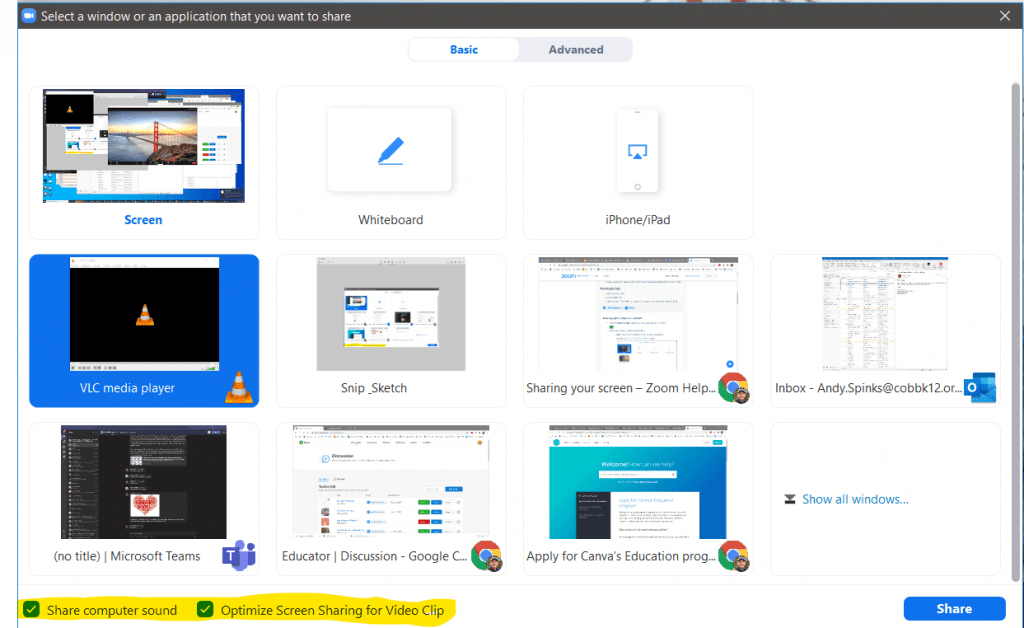Educational videos are a valuable instructional tool, especially in online instruction. There are a few important considerations to remember when using video clips in online classes.
Use Links When Possible
Whenever possible, provide students with links to view your videos directly on their own devices, rather than playing it through screen sharing in Zoom. This avoids a host of technical and copyright complications.
Consider making video clips an asynchronous part of your instruction, especially for longer clips.
Playing Clips through Zoom
When it is not possible or not practical to provide students with a way to view a video clip directly on their own devices, you can play a video for them from your computer over screen sharing. There are a few important settings that make this more successful. In the screen sharing selection menu:
- Make sure “Share Computer Sound” is checked.
- Make sure “Optimize Screen Sharing for Video Clip” is checked.
- Share only the window that has your video, not the entire screen.

Copyright Considerations
If you choose to show copyrighted commercial videos through screen sharing, there are a few important legal limitations. Here are a few of the most basic ones:
- The teacher may only show “reasonable and limited portions” of a film. (Don’t show an entire documentary video.)
- The video must be related to the curricular goals of the course.
- The video must be legally acquired.
- Teachers may not circumvent copyright protection measures to change the format of a video (e.g. ripping a DVD to a file).
The Copyright Act at §110(1) (face to face teaching exemption) allows for the performance or display of video or film in a classroom where instruction takes place in classroom with enrolled students physically present and the film is related to the curricular goals of the course. The TEACH Act amendment to the Copyright Act, codified at § 110(2), permits the performance of a reasonable and limited portion of films in an online classroom. Under the TEACH Act, there is the express limitation on quantity, and an entire film will rarely constitute a reasonable and limited portion. Instructors may also rely upon fair use for showing films in an online course, although showing an entire film online also may not constitute fair use.
Copyright on Campus, University of Florida
More detail about the TEACH Act can be found in this summary from the American Library Association. If you need more information, please don’t hesitate to ask your library media specialist!